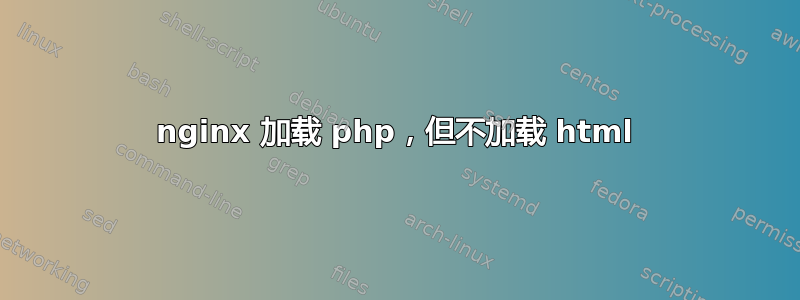
首先,是的,我已经找到了解决方案,但找不到。我知道问题出在我的重写代码上,但我不知道该如何修复它。我在 Debian 9.5 上使用 nginx 和 php-fpm。
php 加载正常,但 .html 不再起作用。
server {
# SSL configuration
#
listen 443 ssl default_server;
listen [::]:443 ssl default_server;
root /var/www/example.com;
# Add index.php to the list if you are using PHP
index index.php index.html index.htm index.nginx-debian.html;
server_name example.com;
location / {
# First attempt to serve request as file, then
# as directory, then fall back to displaying a 404.
try_files $uri $uri.php;
rewrite ^(.*)$ $uri.php;
}
location /media {
autoindex on;
autoindex_exact_size off;
}
# pass PHP scripts to FastCGI server
#
location ~ \.php$ {
include snippets/fastcgi-php.conf;
#
# # With php-fpm (or other unix sockets):
fastcgi_pass unix:/var/run/php/php7.0-fpm.sock;
# # With php-cgi (or other tcp sockets):
# #fastcgi_pass 127.0.0.1:9000;
}
# deny access to .htaccess files, if Apache's document root
# concurs with nginx's one
#
location ~ /\.ht {
deny all;
}
}
谢谢您的聆听。我期待您的回复。
编辑:只是为了澄清,我的目的是让 python 文件的 url 中不显示 .php,而是让 html 文件正常加载。
答案1
本节
location / {
# First attempt to serve request as file, then
# as directory, then fall back to displaying a 404.
try_files $uri $uri.php;
rewrite ^(.*)$ $uri.php;
}
看起来像是罪魁祸首。该rewrite指令只是捕获所有 URI 并将它们重写到.php文件中。
根据评论进行编辑
基于类似的问题这里,我认为你需要的是类似的东西:
location / {
try_files $uri $uri/ @rules;
}
location @rules {
rewrite ^(.*)$ $1.php last;
}


